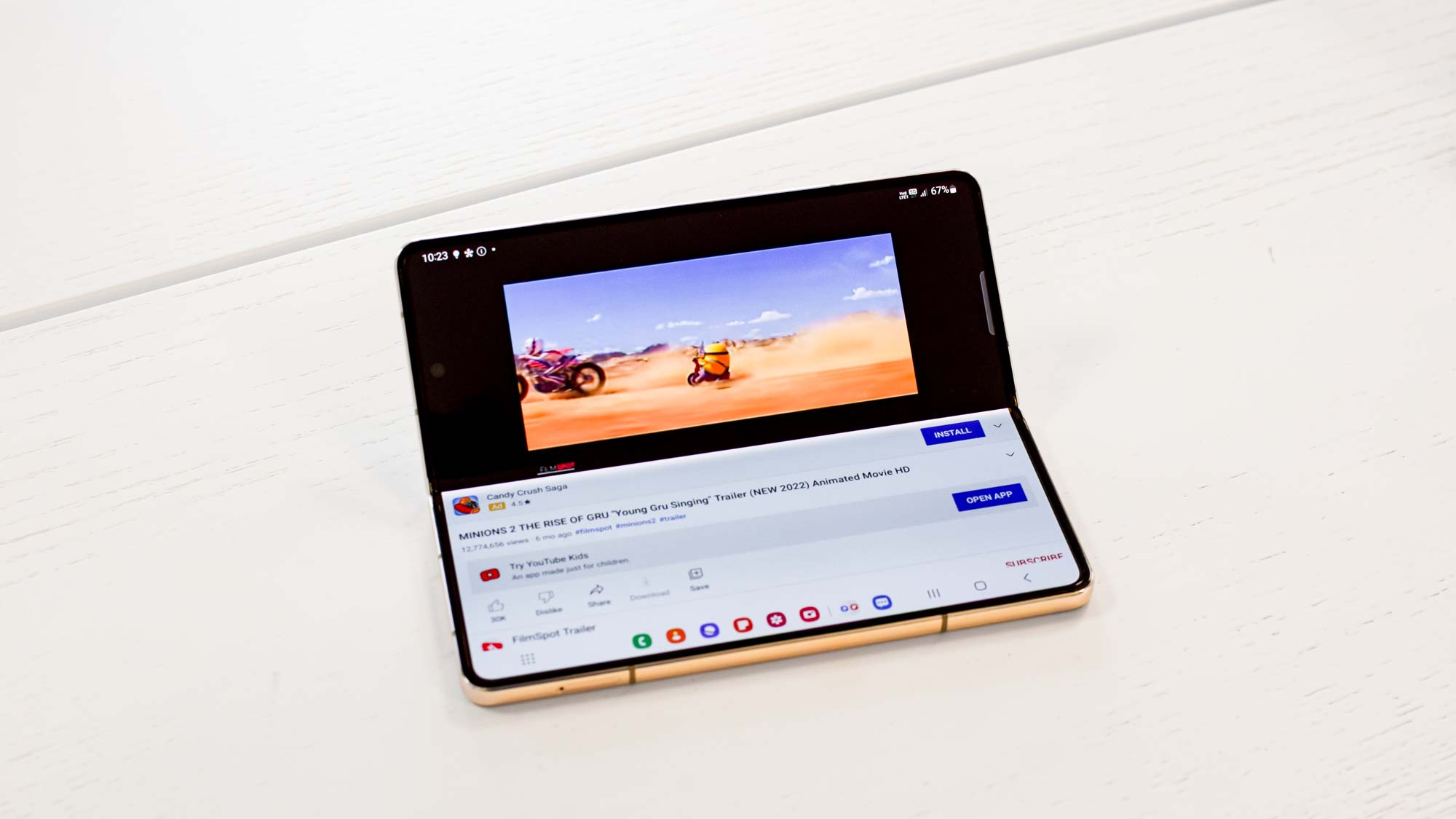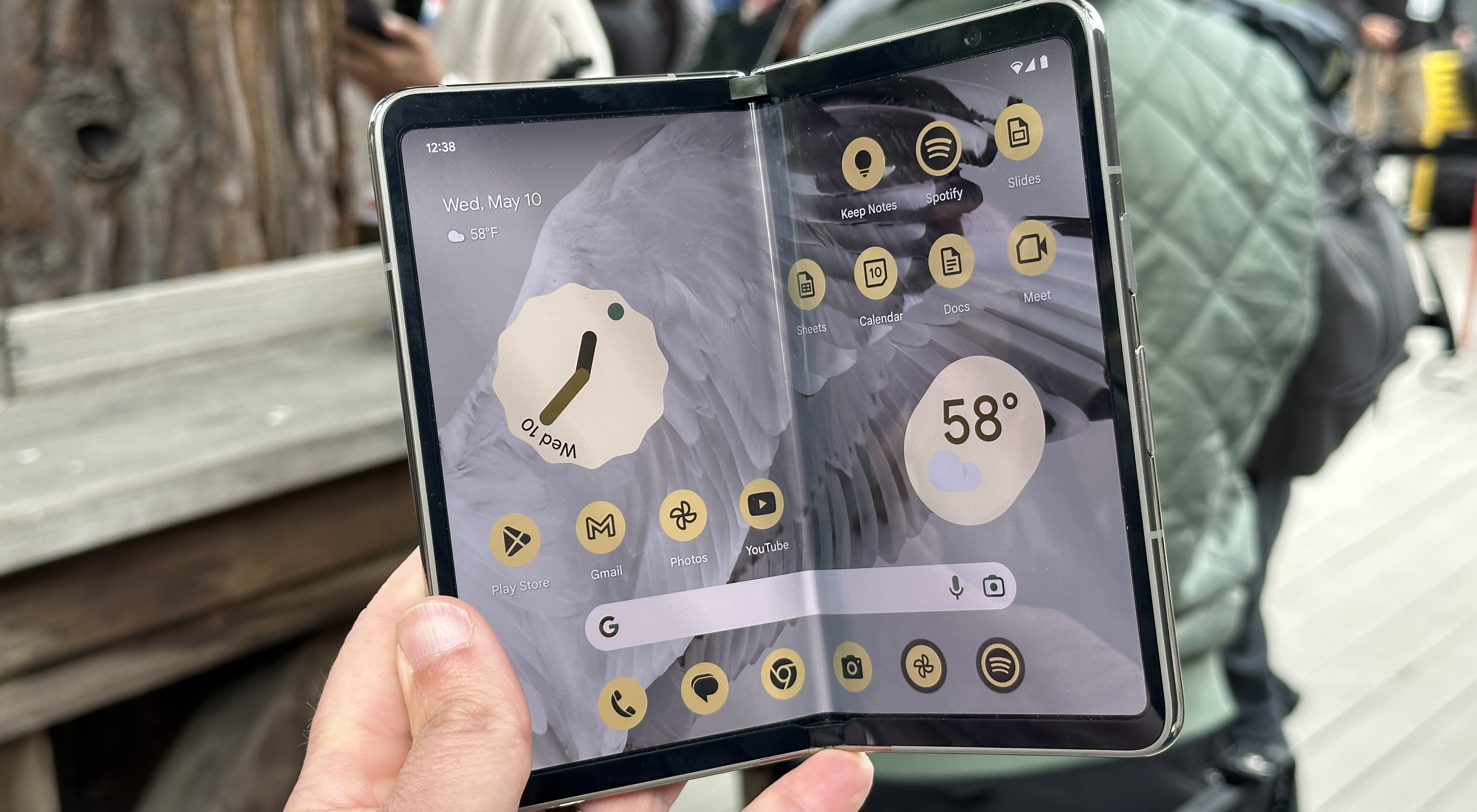Galaxy Z Fold 5, Galaxy Z Flip 5 need to tackle this foldable phone problem
For a phone format that’s only been around since 2019, foldable phones are surprising mature. Later this year, the Galaxy Z Fold 5 and Galaxy Z Flip 5 will mark Samsung’s fifth iterations of its foldable devices. (Well, technically, it’s only the fourth Galaxy Z Flip, since Samsung jumped straight from the original flip phone on to the Galaxy Z Flip 3, but you get my point.) The concept of a phone that folds in two is so well-established at this point, we’re starting to see more competitors entering the market, and for those that haven’t, it seems like a matter of when not if they’ll release a foldable of their own.
And at this stage, you use a foldable phone with certain expectations. You’re going to expect that the phone will open and close with ease, and that its hinge will be able to withstand the rigors of long-term use. At the very least, you’d expect to be able to multitask on the device’s larger interior screen, running multiple apps side by side. You might even hope for features that take advantage of a foldable’s unique form factor like the Flex mode on Galaxy phones that turn half the screen into a control panel.
Foldables are so established at this point that whatever other reservations I may have about the Google Pixel Fold, I’m full confident that Google’s attempt to break into the best foldable phones rankings will perform as advertised. And Mark Spoonauer’s Pixel Fold hands-on certainly suggests a pretty polished device, especially for a debut product.
But regardless of whether the phone comes from Samsung, Google or any of the many phone makers who’ve released foldable devices in China, there’s one area with foldable phones that continues to fall short of expectations. And it’s something that this new wave of devices is going to need to address if foldable phones are to become the mainstream products their advocates are hoping for.
Foldable phones need to last longer on a charge.
Battery life, not display creases, is the big issue
You thought I was going to talk about the crease that often appears on foldable phones’ screens where the device folds open and closed, didn’t you? Look, I’ll grant you the screen is aesthetically displeasing and even disconcerting, should you run your finger over it in the normal course of using the phone, as sometimes happens with the Galaxy Z Flip 4. But that’s an aesthetic issue you can probably live with, even though you shouldn’t have to, given how much you’re paying for a foldable phone these days.
Better battery life is more non-negotiable. Since the entire argument in favor of foldable phones hinges heavily on how productive these devices let you be with their bigger screens and multitasking feature, you want a device that’s able to last all day on a charge. For the most part, the foldable phones we’ve had a chance to review haven’t delivered that.
Not to pick on Samsung, but it’s the most prominent maker of foldable phones right now, so any discussion of foldable phone shortcomings is likely going to center around what we already know from the devices that have come out. And battery life for the Galaxy Z Fold and Galaxy Z Flip has been less than stellr to be perfectly candid.

Let’s take a look at the Galaxy Z Fold 4, which is equipped with 4,400 mAh battery and relies on the power management features of the Snapdragon 8 Plus Gen 1 chipset. That phone last 8 hours and 19 minutes when we ran our battery test, in which a device surfs the web over cellular until it runs out of power. On the bright side, the Galaxy Z Fold 4 improved upon its predecessor’s battery test result by just under 20 minutes, and turning off the fast-refresh rate on the Z Fold 4 display stretched the result to nearly 9.5 hours. That’s still about 25 minutes shy of what the average smartphone can do, though.
At least the Galaxy Z Fold 4 is in striking distance of average battery life. The Galaxy Z Flip 4’s time of 8 hours and 33 minutes was about 1 hour and 20 minutes off the pace set by other phones.
The challenge facing foldables
Foldable phones have it rough on the battery front. Not only do they have to keep a larger interior screen powered up, there’s usually an exterior cover display requiring power, too. (There certainly is on Samsung’s phones, and the Pixel Fold has a cover display, too.) At the same time, the foldable phone factor means there’s only so much room for a a big battery, at least if you want to keep the device portable.
Yet, I think there’s some reason for optimism with the new foldable phones that are beginning to come out. And it has a lot to do with how they’re relying on chips with better power management features.

We’re in the dark as to how the Pixel Fold will perform on our battery test since there’s no predecessor to compare it to. But I am encouraged by the fact that the Pixel 7a produced better than average battery life (at least with its screen locked at 60Hz refresh rate) and that it improved upon the performance of its predecessor. The Pixel 7a features a Tensor G2 chipset, which is the same silicon powereing the Pixel Fold, so perhaps we’ll see similarly efficient battery life when we test that phone after it starts shipping in June.
The picture’s even brighter for the Galaxy Z Fold 5 and Galaxy Z Flip 5, both of which are expected to run on the same Snapdragon 8 Gen 2 for Galaxy chipset that powers the Galaxy S23 lineup. All three S23 models outlasted their Galaxy S22 counterparts, with the Galaxy S23 Ultra in particular posting an impressive battery test time of 12 hours and 22 minutes. That places the phone on our best phone battery life list, and the equally impressive Galaxy S23 Plus just missed landing on that list by a few minutes. The Snapdragon 8 Gen 2’s excellent power management capabilities are a big reason why those phones did so well.
Past performance doesn’t necessarily guarantee future results, so we’ll have to see how those phones perform when we actually get them in for testing — the Pixel Fold next month and the Samsung foldables when they’re announced later this year. Still, the signs are encouraging that foldable phones could finally exhibit some decent battery life. Frankly, it’s not a moment too soon.
More from Tom’s Guide
For all the latest Technology News Click Here
For the latest news and updates, follow us on Google News.
